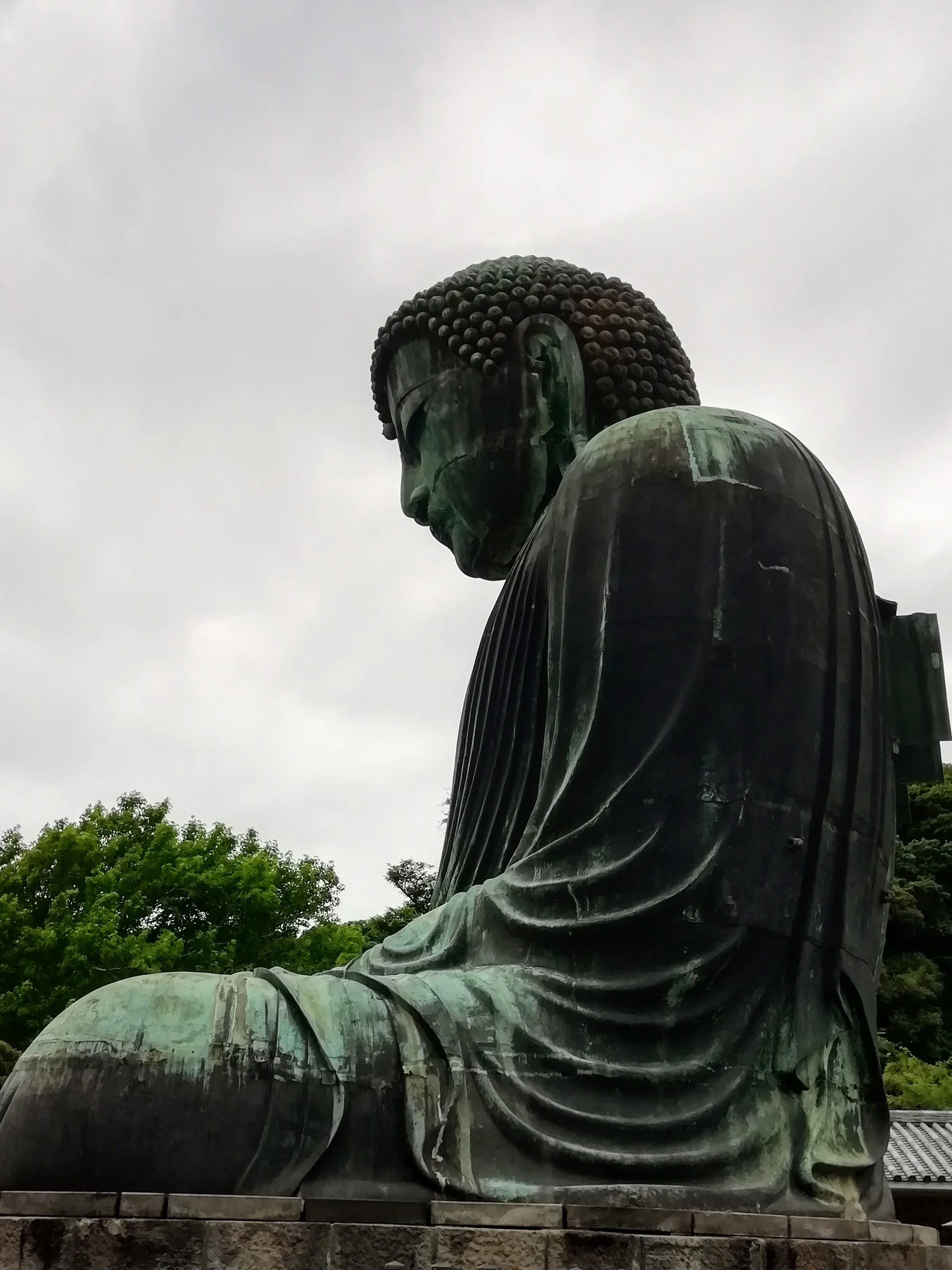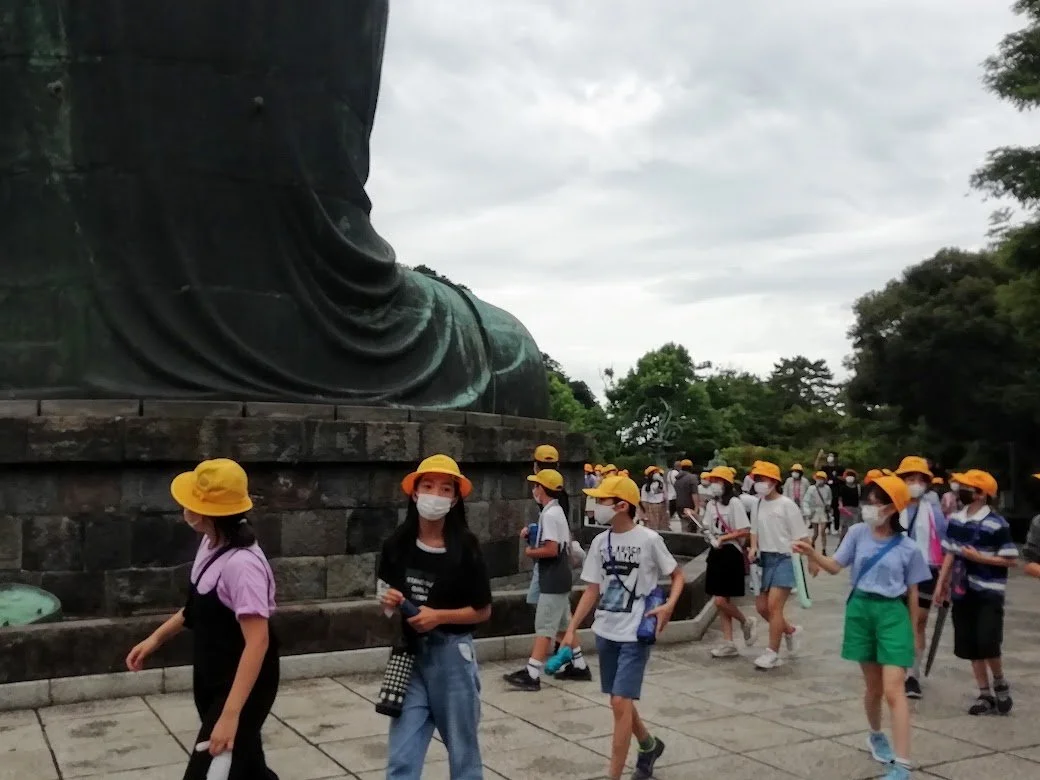An Audience in Kamakura
The morning was gray and hung with clouds as we walked the stone approach to Kotoku-in. We were at the temple for a brief audience with the Bodhisattva Amitabha in one of his best-known incarnations—the Great Buddha of Kamakura.
With our baby Hana-chan’s arrival less than three months away, we knew this trip to the ancient seaside capital of Kamakura would probably be our last excursion for a while. So, we didn’t force a schedule, just wandered as inclined.
Before passing through the temple gate, an unobtrusive sign in Japanese and English reads:
“Stranger, whosoever thou art and whatsoever be thy creed, when thou enterest this sanctuary remember thou treadest upon ground hallowed by the worship of ages. This is the Temple of Buddha and the gate of the eternal and should therefore be entered with reverence.”
We proceeded through the grounds and around a wooded corner. There the Kamakura Daibutsu sat in his composure against the lush hills surrounding the temple, 13 meters high, bronze gray-green on a pedestal of stone. Completed around the year 1262, the image was housed on and off over the centuries, though these structures were destroyed over and again by storms. A 15th century tidal wave swept the housing away one last time, leaving Amitabha in place, as serene as ever. The image has sat in the open air ever since.
Amitabha—also known in Japan as Amida Nyorai—is the principle enlightened being of Pure Land Buddhism. Kamakura’s Amitabha sits in deep contemplation with legs crossed, a placid smile, eyes mostly closed. But what struck me, and what’s uncharacteristic of the meditation posture, is his head, which leans slightly forward. In the traditional meditation postures of Buddhist images, impeccable posture is the norm. Without a straight back, the practitioner is soon just fighting gravity—contemplation at even a standard human level, let alone that required of a cosmic Buddha, is impossible. A head drooping forward shows a loss of concentration, or even that one is nodding off.
Questionable posture
But the serene expression of the Kamakura Buddha is as wakeful as it is absorbed. And it occurred to me that the shift in posture reflects Amitabha’s attention moving from his blissful abode—the Western Paradise where he’s said to abide—to the cries of the world. This subtle shift in posture is one of compassion, recognition of the people mingling below, acceptance of all that crumbles and decays.
We had approached the Great Buddha at a quiet moment. Soon mobs of school children swarmed the grounds on field trips, men and women poured in cackling, the reverence suggested at the entrance nowhere to be found. Still, Amitabah gazed down, unfazed. We set off through the crowd to find what else Kamakura had in store.


